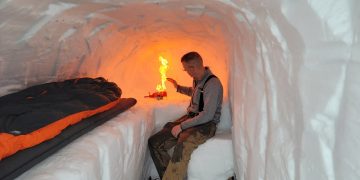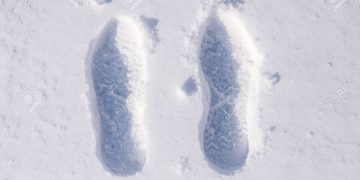Introduction
In the vast and unpredictable world of fieldcraft, where survival, strategy, and stealth intertwine, camouflage emerges as one of the most vital skills in a practitioner’s arsenal. Whether in the military, wildlife research, or outdoor survival, the ability to blend into the environment can be the difference between success and failure. Camouflage is not merely about donning the right attire; it’s a holistic concept that includes understanding terrain, exploiting natural resources, and, most importantly, harnessing the principles of concealment.
This article delves into the critical role camouflage plays in fieldcraft, explores its historical significance, its scientific foundations, and its applications across various domains. It will also touch on the ethics and challenges associated with its use, all while examining why it remains an indispensable tool for professionals and enthusiasts alike.
The Evolution of Camouflage in Fieldcraft
The concept of camouflage is far from new. Its origins can be traced back to early hunting societies, where stealth and disguise were key to successful hunting. Ancient humans learned to use their surroundings to their advantage, whether through wearing animal skins, hiding behind natural features, or adopting methods that helped them avoid detection from both prey and predators.
Military Camouflage:
Camouflage, as we recognize it today, gained significant prominence during the First World War. The advent of modern warfare—characterized by trench warfare, aerial reconnaissance, and advanced weaponry—necessitated new methods of disguise. Soldiers began painting their faces and equipment with muted colors to blend into the environment. By the time the Second World War rolled around, camouflage had evolved into a specialized field, with the development of complex patterns designed to confuse enemy forces. The introduction of “camouflage netting” allowed for large areas to be covered, concealing vehicles and weaponry from aerial surveillance.
Modern Camouflage in Nature and Survival:
Beyond warfare, camouflage also plays a crucial role in the natural world. Both predators and prey rely on natural camouflage to either hide from danger or stalk their next meal. Animals like the chameleon and the snowshoe hare have evolved sophisticated camouflage techniques, adapting their coloration to match their surroundings. In survival situations, humans can take inspiration from these natural camouflage tactics. For example, using natural vegetation and mud to obscure one’s presence from the environment is a time-honored tradition in fieldcraft.

The Science Behind Camouflage
Camouflage, at its core, is based on a set of scientific principles that exploit visual and sensory perceptions. The objective is not just to make oneself “invisible” but to distort or obscure the features that would normally stand out.
Breaking the Line of Sight
One of the foundational principles of camouflage is breaking up the human outline. Our brains are hardwired to detect certain shapes, especially human forms. A solitary figure against a natural backdrop, with no disruption to the outline, will stick out like a sore thumb. Camouflage techniques aim to distort or break up this silhouette by using patterns, textures, and colors that match the environment.
Patterning and Color Theory
Human vision relies heavily on contrasts, making pattern and color integral to effective camouflage. Natural environments are rarely uniform in color, so using complex, irregular patterns that mimic the surrounding landscape is essential. In military applications, for example, disruptive camouflage patterns such as the “MARPAT” (Marine Pattern) used by the U.S. Marines are designed to create optical confusion at various distances. These patterns use a combination of colors, such as greens, browns, and blacks, arranged in asymmetrical blocks or pixels to blend into forest, urban, or desert landscapes.
Natural Camouflage Techniques
Beyond the deliberate use of camouflage gear, understanding the natural world’s camouflage techniques can aid in blending in with one’s surroundings. In forests, using branches, leaves, and mud to mask one’s scent, shape, and color can render an individual nearly undetectable. In snow, white clothing and the use of snow to cover oneself are common methods. Similarly, desert environments demand light-colored clothing to blend with the pale sands, using both color and the application of natural materials like sand to obscure a person’s presence.
Practical Applications of Camouflage in Fieldcraft
The application of camouflage in fieldcraft can vary widely depending on the scenario, terrain, and the level of threat one faces. The following outlines its use in several fields:
1. Military and Tactical Operations
In military operations, camouflage is more than just a matter of aesthetic concealment—it is a survival tool. Whether it’s for hiding soldiers, vehicles, or entire military installations, camouflage techniques have evolved alongside advancements in technology. Today, military units employ a range of strategies, from individual soldier concealment (using ghillie suits or face paint) to large-scale operations involving camouflage netting and terrain manipulation.
Ghillie suits, a particularly well-known method of concealment, consist of a camouflaged net with strands of natural materials like twigs and leaves attached to it. This creates a “bush-like” appearance, blending the soldier into the surrounding landscape. Snipers, for example, rely on ghillie suits to remain undetected in hostile environments.
2. Wildlife and Environmental Research
In wildlife research, scientists often use camouflage to observe animals without disturbing their natural behaviors. Researchers use a variety of camouflage techniques to blend in with the environment and avoid alerting animals to their presence. This is especially important for studying elusive species, such as big cats or rare birds, where human presence could skew behavior or cause animals to flee.
In addition to personal camouflage, researchers may use blind structures made from natural materials that mimic the environment. These “hides” enable observation without influencing the subject. Similarly, when conducting environmental surveys or conservation work, blending into the natural environment minimizes disruption, ensuring more accurate data collection.
3. Survival and Outdoor Recreation

In survival situations, the ability to camouflage oneself is paramount. Whether you are evading an animal, avoiding detection by another person, or simply trying to stay hidden from the elements, camouflage can be a lifesaver. One of the first lessons in survival training often involves blending into the surroundings to avoid drawing attention, especially when shelter or food sources are scarce.
Survivalists and outdoor enthusiasts also use camouflage to avoid detection from dangerous animals or to make hunting more effective. In both cases, understanding the terrain and employing effective camouflage methods—such as covering oneself with natural debris or wearing clothing that matches the environment—can significantly improve survival odds.
4. Law Enforcement and Security Operations
Camouflage also plays a vital role in law enforcement and security operations. Whether tracking suspects in dense forests, executing covert operations, or monitoring large crowds, the ability to blend into the environment is essential. Law enforcement officers often use camouflage patterns on uniforms and vehicles to blend into urban, rural, or wooded environments, providing a tactical advantage in both surveillance and search-and-rescue missions.
Ethical Considerations and Challenges of Camouflage
While camouflage has undeniable benefits, its use can raise ethical concerns, particularly in military and tactical contexts. The use of camouflage to conceal military movements during warfare is often justified by the necessity of defense, but it can blur the lines between combatants and civilians. In modern conflicts, non-combatants may unintentionally be caught in the crossfire, and camouflage clothing or vehicles can inadvertently mislead enemy forces into targeting innocents.
Furthermore, the increasing sophistication of camouflage technology—such as adaptive camouflage that changes color or texture—raises questions about the future of warfare and the ethics of deception. Will these advances make conflict more impersonal or impassable for civilian populations? As technologies evolve, the debate about the ethics of camouflage and its potential impact on society will only grow more pressing.
The Future of Camouflage
Camouflage continues to evolve in tandem with technological advancements. In recent years, there have been significant developments in materials science, optics, and AI, leading to more advanced and adaptive camouflage solutions. One such development is “adaptive camouflage,” which uses materials that change color, texture, or reflectivity in response to the surrounding environment. This kind of technology could allow soldiers or equipment to blend seamlessly into any environment, from dense jungles to urban settings, using real-time data.
Another emerging field is the use of “electromagnetic camouflage,” which involves altering the way light and sound waves interact with objects. Such advancements could potentially lead to the creation of materials that make objects less detectable not only to the human eye but also to advanced radar and infrared sensors.
As technology progresses, camouflage might also become more personalized, with wearable tech that adapts to environmental changes automatically. Additionally, the rise of AI-driven camouflage could introduce new techniques in wildlife conservation, emergency response, and even fashion.
Conclusion
Camouflage is far more than just a tool of concealment—it is an art and a science that draws on deep knowledge of the environment, perception, and human behavior. Whether employed by soldiers on the battlefield, researchers in the field, or survivors in the wild, camouflage serves as a critical element in the strategic and tactical domains of fieldcraft. It allows individuals to remain unseen when necessary, to observe without interference, and to adapt to ever-changing environments.
As camouflage continues to evolve with technological advances, its significance in both professional and recreational fields will only grow. Understanding the underlying principles of camouflage can offer profound insights into how we interact with the natural world and each other, and why it remains a cornerstone of both survival and strategy.























